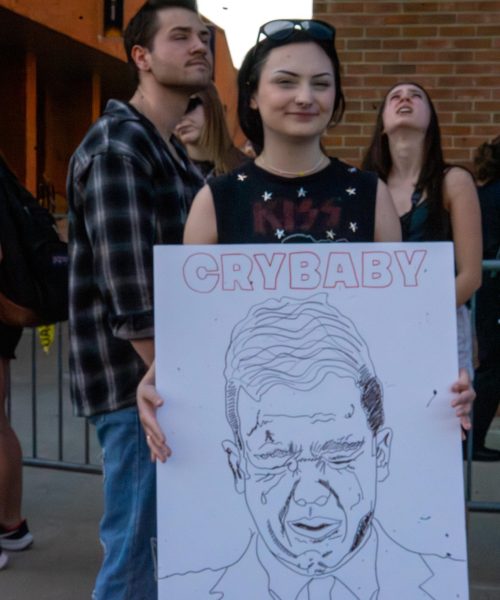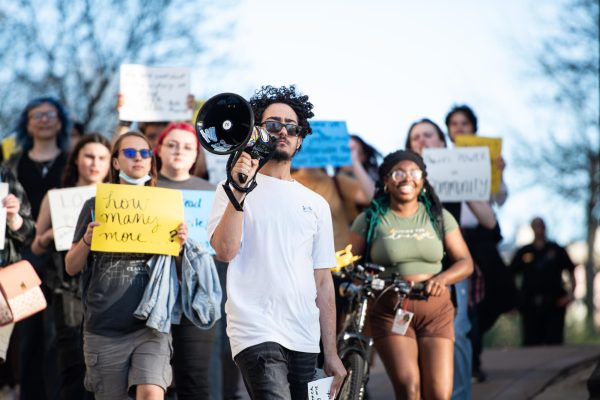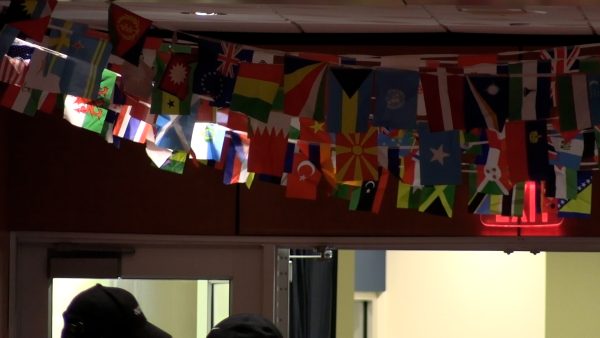A celebration of love and color: Holi celebration brightens Kent State
April 7, 2019
It finally felt like spring on Saturday with temperatures over 60 degrees for the first time of the season, and Manchester Field was more colorful than a garden full of vibrant, budding flowers taking their first breath.
Powdered colors flung into the heavens amidst blasting pop music fell gently like snow, leaving brilliant blues, reds, yellows, purples, greens and pinks smearing anything they touched.
No face, article of clothing or exposed skin remained clean as people danced, laughed, sang and threw colored powder with friends as they celebrated Holi, the ancient Hindu festival of love and color hosted annually by the Kent Indian Association.
“Holi is like a festival of colors,” Gurveen Kaur, a biology pre-med freshman, said. “It is a two-day festival in India. On the first day, we have a huge bonfire and people dance around it to portray the good over evil. On the second day, people rejoice with colors, we eat food, they dance to music. They’re just being happy, enjoying themselves. That is what Holi is all about.”
Kaur is from India and celebrates Holi every year. She described Holi as “a festival of love.”
“Nobody cares which religion you are, which background you are,” Kaur said. “We just play,”
“Basically, we celebrate good over evil,” said junior biochemistry major Foram Parmar.
Holi encourages people to let their hair down, enjoy sweet Indian treats like Gujiya, dumplings filled with dried milk and fruits and party with friends, according to HoliFestival.org. The holiday urges people to let go of their worries so much that a rule was created to guarantee people let loose: “Bura na mano Holi hai” in Hindi, or “please don’t take any offense for it is Holi.”
Holi is celebrated all over India in various ways, like the usage of throwing color that stems from Indian legend. Lord Krishna, an Indian god, was jealous of his soulmate Radha’s fair complexion while his was dark, so his mother encouraged him to cover Radha’s face with color, according to HoliFestival.org. This idea of coloring the faces’ of loved ones became ingrained in Holi celebration as an expression of love.
The colors also have different meanings, as red symbolizes purity, green is vitality, blue is calmness and yellow is a feeling of piousness.
“There is not a specific place in India where Holi is celebrated,” Kaur said. “It is all over India from all cultures, religions and backgrounds celebrate Holi. Every state does have its own version to celebrate Holi. Like some states will be pretty wild whereas in the other states it would be pretty muddy because sometimes mud is the purest thing.”
Alexis Walker, a sophomore fashion merchandising major, was attracted to Holi to learn more about the visual celebration.
“I do not know anything about Holi besides what I see in Indian weddings through TV shows and movies,” Walker said. “I am very intrigued by it all. I wanted to know more about the culture, so I showed up on this beautiful Saturday.”
Holi is traditionally celebrated the day after the full moon in the Hindu month of Phalguna, which takes place around early March, according to ReligionFacts. This year, Holi fell on March 20, however, due to inclement weather, the Kent Indian Association moved the date of celebration to April 6.
When Parmar would celebrate Holi in India with her family, she said it started at 8 a.m. and didn’t end till 9 p.m., and that there were colors everywhere.
“You can use whatever types of powder (in India),” Parmar said. “It is not organic, so it will stain you for weeks. But here they use organic powder.”
Kaur said the Kent Indian Association had a “eco-friendly Holi,” using organic colors that would not harm the ground.
For many, this year’s celebration at Kent was a taste of what India is like during Holi.
“It is a great way to represent us Indians and bring diversity into Kent State,” Parmar said. “Even people who aren’t Indian come to this Holi event. They are able to get to know our culture, our religion and get to know us.”
Katia Rodriguez covers international students. Contact her at [email protected].
McKenna Corson is the managing editor. Contact her at [email protected].
























